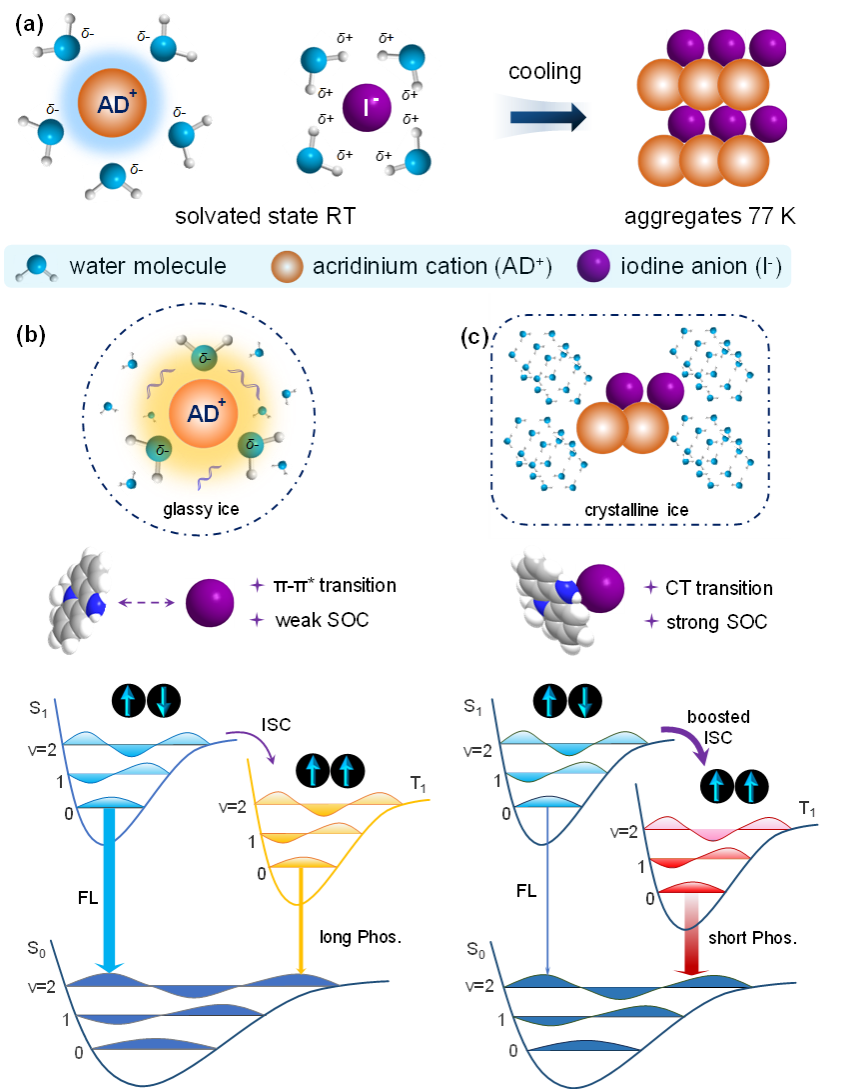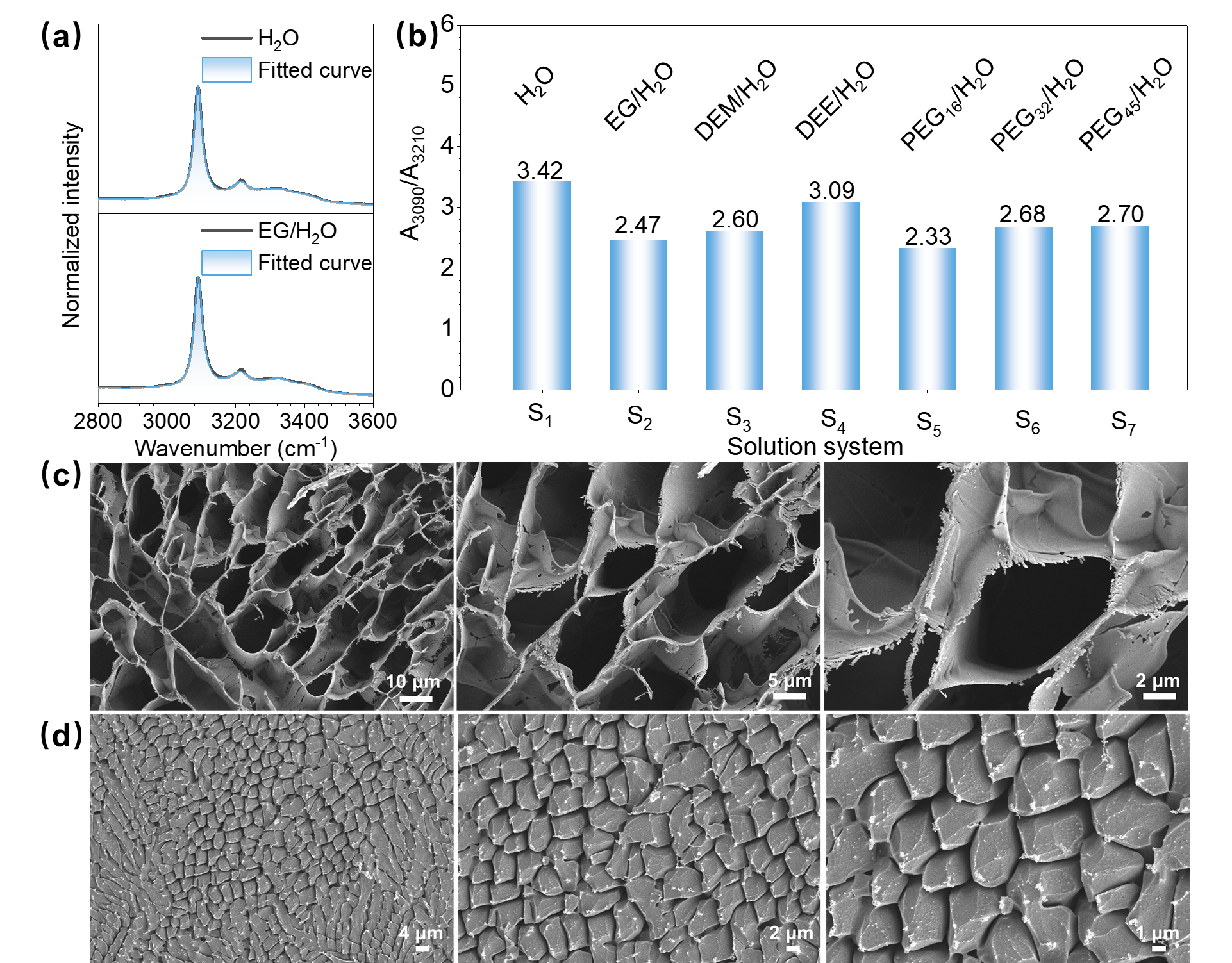
Scientists from the University of Science and Technology of China (USTC) developed a water-ice microstructures detection method using organic phosphorescent probes and phosphorescence spectroscopy.
Their works were published in Angewandte Chemie.

Schematic illustration of the hydration state and the energy levels of the ADI aqueous system. (Image by Prof. ZHANG Guoqing’s team)
The team, led by Profs. ZHANG Guoqing, LIU Shiyong, ZHOU Xiaoguo, and researcher ZHANG Xuepeng, proposed an emission-based method to study organic molecules in water ice. They used the hydration state of a phosphorescent probe, acridinium iodide (ADI), to indicate the microstructural changes of water ice (i.e. crystalline vs. glassy). The microstructures of water ice can be significantly dictated by a trace amount of water-soluble organic molecules.
Specifically, if water ice maintains amorphous at low temperatures, the AD+ cation and I- anion of the ADI probe will be separated by bound water molecules, exhibiting long-lived phosphorescence and a visible greenish-yellow afterglow. While in ordered crystalline ice, the ADI probe molecules aggregate, inducing short-lived red phosphorescence through the heavy atom effect of iodine.
The emission spectra revealed distinct spectroscopic changes in the aqueous solution of ADI upon the addition of ethylene glycol (EG) small molecules and monodispersed EG polymers (PDI=1). The addition of trace amounts of EG (0.1%) led to the emergence of the fluorescence band around 480 nm, accompanied by the more intense phosphorescence band with well-resolved vibronic progressions at 555, 598, and 648 nm. The spectral results indicated that the addition of EG led to the transformation of ADI molecules from undissolved aggregates to dissolved ion states in water ice.

The Raman spectroscopy and Cryo-SEM images of the ADI aqueous system. (Image by Prof. ZHANG Guoqing’s team)
The low-temperature scanning electron microscopy (Cryo-SEM) images showed that the addition of trace EG into the water ice containing ADI resulted in local areas with porous microstructures. Meanwhile, low-temperature Raman (LT-Raman) spectra confirmed that the addition of trace EG was sufficient to cause a shift in the O-H vibration of water ice from a low-frequency crystalline state to a high-frequency glassy state. These results can consolidate the conclusions above drawn through phosphorescence spectroscopy.

86-10-68597521 (day)
86-10-68597289 (night)

52 Sanlihe Rd., Xicheng District,
Beijing, China (100864)

